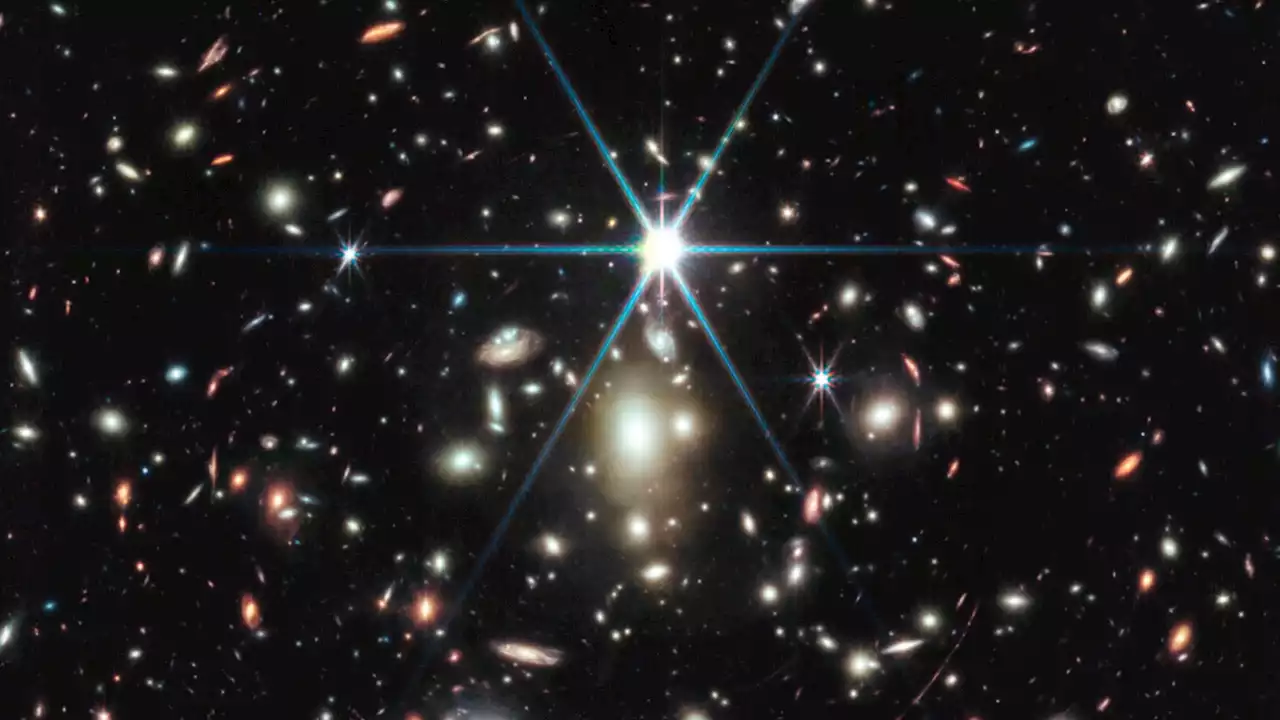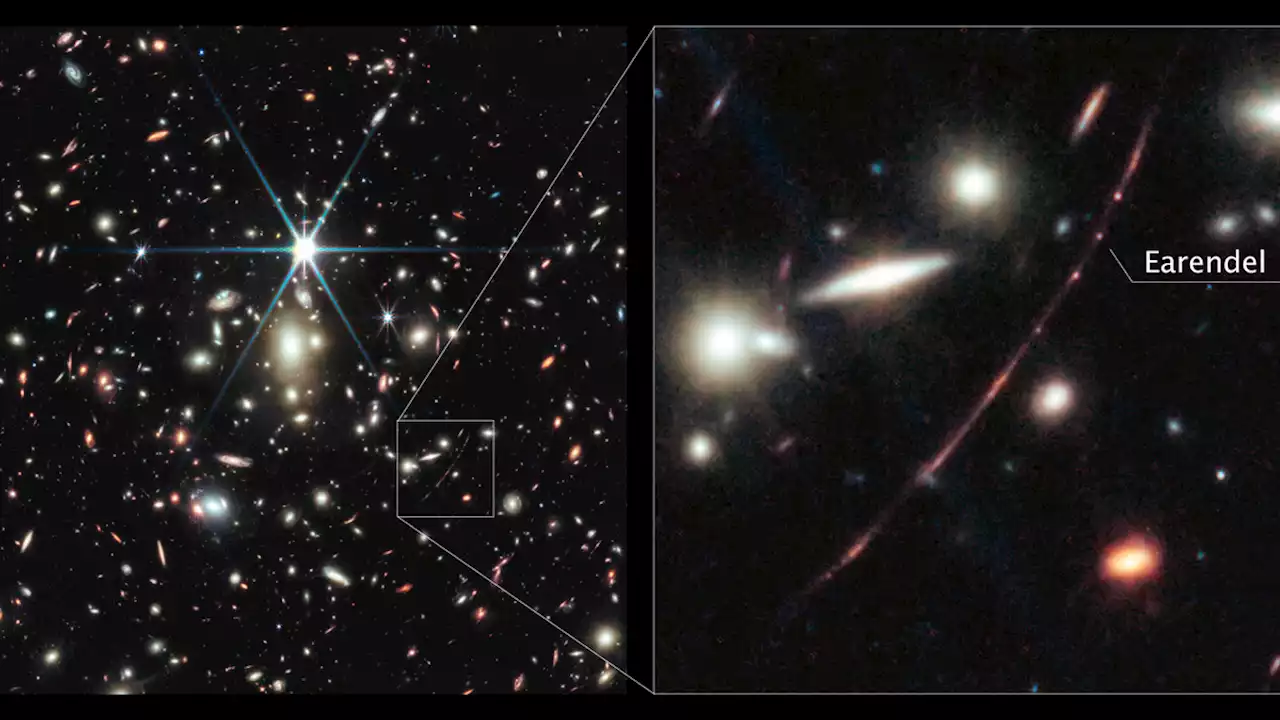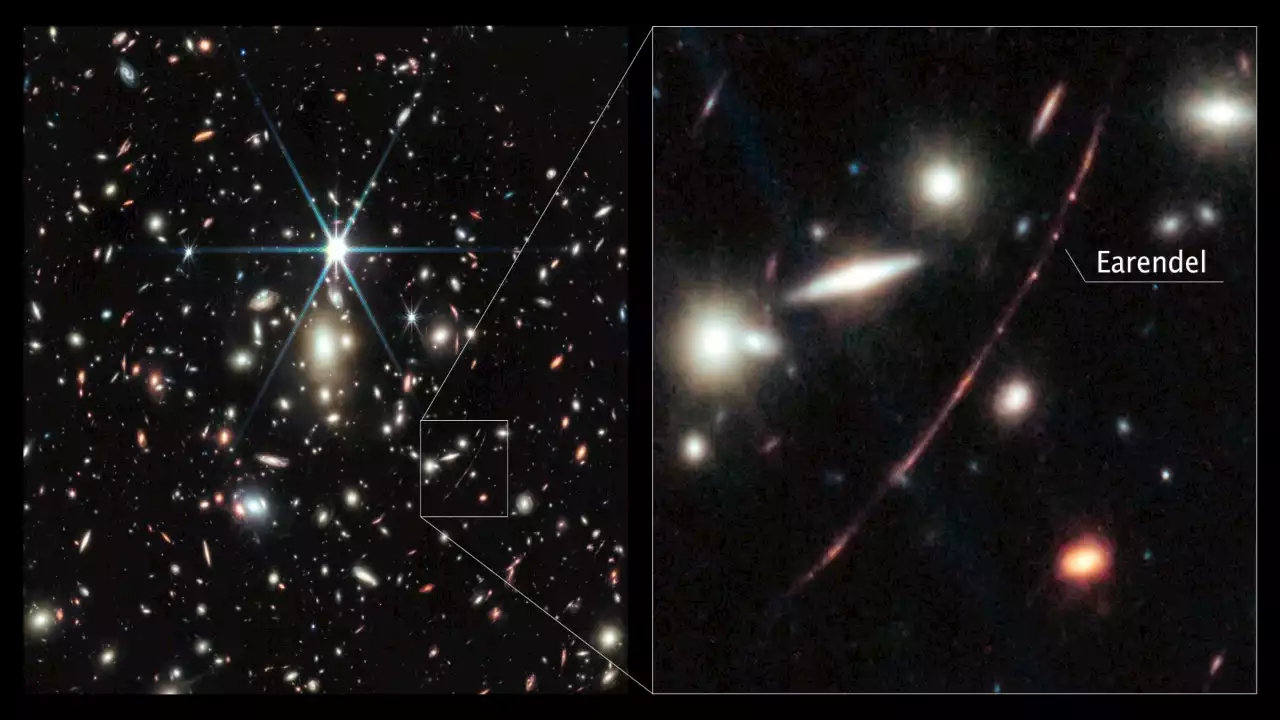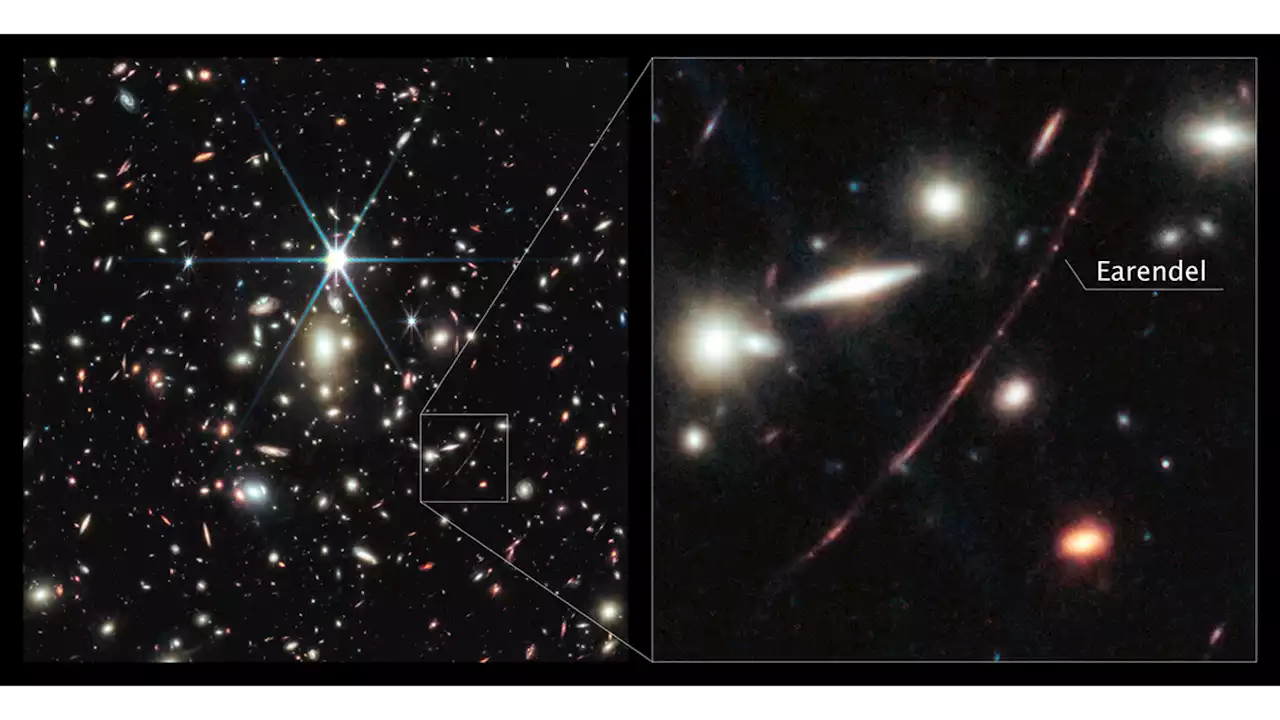The ancient star Earendel is more than twice as hot as the sun and around a million times brighter, new James Webb Space Telescope observations suggest.
Now, the James Webb Space Telescope has captured an even more detailed glimpse of this ancient celestial body, revealing it to be a massive B-type star that's more than twice as hot as the sun and roughly a million times brighter. The star is known as WHL0137-LS — nicknamed Earendel — and resides in the Sunrise Arc galaxy. Light we detect now from Earendel began its journey from the star 12.
The telescopes were able to detect this extremely distant star due to its position behind"a wrinkle in space-time" created by a massive cluster of galaxies that’s bending and magnifying Earendel’s light through a phenomenon called gravitational lensing, according to a statement from NASA.
Peering through this gravitational lens, scientists captured the crimson rays shining off Earendel, as well as a kaleidoscope of star clusters in the Sunrise Arc. The small dots on either side of Earendel are two images of another ancient star cluster estimated to be at least 10 million years old, which"shows us how the globular clusters in our own Milky Way might have looked when they formed 13 billion years ago," the statement said.
"The discoveries have opened a new realm of the universe to stellar physics, and new subject matter to scientists studying the early universe, where once galaxies were the smallest detectable cosmic objects," the statement said."The research team has cautious hope that this could be a step toward the eventual detection of one of the very first generation of stars, composed only of the raw ingredients of the universe created in the big bang — hydrogen and helium.
Россия Последние новости, Россия Последние новости
Similar News:Вы также можете прочитать подобные новости, которые мы собрали из других источников новостей
 Bryce James, LeBron James’ youngest son, announces academy moveAfter months of speculation, 16-year-old basketball sensation Bryce James announced where he'll attend school in the fall after leaving Sierra Canyon.
Bryce James, LeBron James’ youngest son, announces academy moveAfter months of speculation, 16-year-old basketball sensation Bryce James announced where he'll attend school in the fall after leaving Sierra Canyon.
Прочитайте больше »
 Bryce James, LeBron’s son, transferring to Notre Dame High SchoolBryce James, LeBron James’ youngest son, is moving to a new school.
Bryce James, LeBron’s son, transferring to Notre Dame High SchoolBryce James, LeBron James’ youngest son, is moving to a new school.
Прочитайте больше »
 Cosmic question mark spotted by Webb space telescope | Digital TrendsScientists have been intrigued by the appearance of a question mark captured in deep space by the James Webb Space Telescope.
Cosmic question mark spotted by Webb space telescope | Digital TrendsScientists have been intrigued by the appearance of a question mark captured in deep space by the James Webb Space Telescope.
Прочитайте больше »
 Earendel: Webb reveals most distant star ever discoveredThe high-resolution image of Earendel was captured using Webb’s NIRCam (Near-Infrared Camera) instrument. Earendel stands as a colossal B-type star, surpassing our Sun in both temperature and radiance by a magnitude of a million.
Earendel: Webb reveals most distant star ever discoveredThe high-resolution image of Earendel was captured using Webb’s NIRCam (Near-Infrared Camera) instrument. Earendel stands as a colossal B-type star, surpassing our Sun in both temperature and radiance by a magnitude of a million.
Прочитайте больше »
 Webb image suggests even the most distant star has companyObservations by the cutting-edge space observatory offer up new details of Earendel—a 12.9-billion-year-old star.
Webb image suggests even the most distant star has companyObservations by the cutting-edge space observatory offer up new details of Earendel—a 12.9-billion-year-old star.
Прочитайте больше »
 Webb reveals colors, features of most distant star ever detectedAstronomers using the James Webb Space Telescope looked at Earendel, the farthest star ever detected, following previous observations from NASA's Hubble Space Telescope.
Webb reveals colors, features of most distant star ever detectedAstronomers using the James Webb Space Telescope looked at Earendel, the farthest star ever detected, following previous observations from NASA's Hubble Space Telescope.
Прочитайте больше »
